Cannabis growing FAQ
best practices watering irrigation outdoor gardens
Published
7 months agoon
By
admin
Welcome, fellow growers, to the world of cannabis gardening! Whether you are a seasoned cultivator or a novice enthusiast, mastering the art of watering and irrigation is crucial for successful outdoor cannabis cultivation. As a passionate and experienced grower, I understand the specific needs of cannabis plants, including marijuana seeds and the process of growing marijuana. I’m here to share valuable insights and best practices with you. In this comprehensive guide, we will delve into the key aspects of watering and irrigation, exploring techniques, schedules, and factors that influence the growth of your prized cannabis plants. So, let’s embark on this green journey together and learn how to optimize your cannabis garden with care and precision.
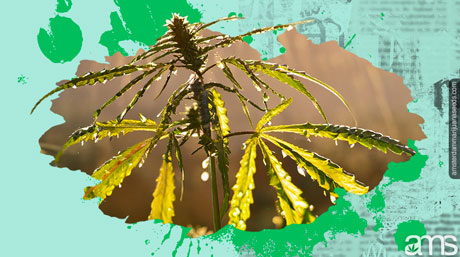
Understanding the Basics: Cannabis Seeds and Growing Marijuana
Before we dive into watering and irrigation practices, it’s essential to address the foundation of cannabis cultivation: the seeds. Whether you buy or marijuana seeds online or obtain them from a reliable source, selecting high-quality seeds is paramount to your success.
Choosing the right cannabis seeds goes beyond the strains and genetics. Consider factors like growth characteristics, THC/CBD content, and seed viability. Opt for reputable seed banks with positive reviews from fellow growers to ensure the best possible start for your garden.
Once you have acquired the right cannabis seeds , it’s time to initiate the cannabis growing process. Understanding the process of growing marijuana and the plant’s specific needs during its various growth stages is vital.
Creating an ideal growing environment with ample sunlight, proper ventilation, and nutrient-rich soil is essential for growing marijuana. Ensure a healthy pH level (between 6.0 to 7.0) to optimize nutrient absorption for your cannabis plants.
Cannabis Watering Best Practices
As you commence the cannabis growing journey, the first question that arises is, “What are the best practices for Cannabis watering?” The key to successful watering lies in striking a balance – avoiding overwatering or underwatering your plants.
Watering cannabis plants, especially when growing marijuana, effectively involves considering various factors such as climate, temperature, humidity, and soil composition. For instance, in hot and dry climates, cannabis plants may require more frequent watering than in cooler regions.
Always water your cannabis plants, at the base, avoiding direct contact with leaves or flowers. Wet foliage can lead to the development of mold and fungal diseases. Use room-temperature water to prevent shocking the roots and hindering nutrient uptake. An eco-friendly and cost-effective approach is to collect rainwater in barrels for your garden.
During the vegetative growth phase of growing marijuana, cannabis plants typically require more water. As they transition to the flowering stage, reduce watering slightly to mimic natural conditions.
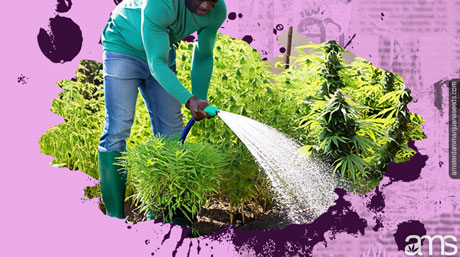
Optimizing Garden Irrigation for Outdoor Gardening
Garden irrigation techniques play a crucial role in ensuring a consistent and efficient water supply to your cannabis plants. Drip irrigation and soaker hoses are excellent choices for outdoor gardens, including those for growing marijuana, as they deliver water directly to the root zone while minimizing wastage.
Consider employing a timer-based irrigation system to automate the watering process. This not only saves time and effort but also ensures that your cannabis plants, receive water consistently, even when you are away.
Implementing mulching around your marijuana plants, can help retain soil moisture, reduce weed growth, and maintain a more stable root temperature.
Understanding the Specific Needs of Cannabis Plants
What are the specific needs of Cannabis plants, in terms of Watering practices? Cannabis plants have varying water requirements throughout their life cycle, influenced by factors such as age, size, and environmental conditions.
Young cannabis seedlings, are delicate and sensitive to excessive moisture. Water them sparingly, allowing the soil to dry out slightly between waterings.
As cannabis plants, mature, they demand more water due to their increased size and foliage. Observe your plants closely and adjust the watering frequency accordingly.
During the flowering phase, marijuana plants, require additional care, as this is when bud development occurs. Monitor soil moisture levels closely, ensuring they receive enough water without waterlogging. Observe your marijuana plants, for signs of stress, such as drooping leaves or yellowing. Adjust your watering schedule if you notice any abnormalities, as these could be indicators of either overwatering or underwatering.

Approaching Cannabis Cultivation Considering Irrigation
Successful cannabis cultivation, involves a holistic approach that considers all aspects of plant care, with irrigation playing a central role. Incorporate watering practices into your overall cultivation strategy.
Keep a journal to track your watering schedule, growth progress, and any changes you make to your garden. This record-keeping will help you fine-tune your approach over time.
Understand that different cannabis strains, may have varying water requirements. Some strains are more drought-resistant, while others thrive in humid conditions. Tailor your watering approach accordingly.
Learn from your experiences and mistakes. As an enthusiastic grower, don’t be afraid to experiment with different watering techniques and observe how your cannabis plants, respond.
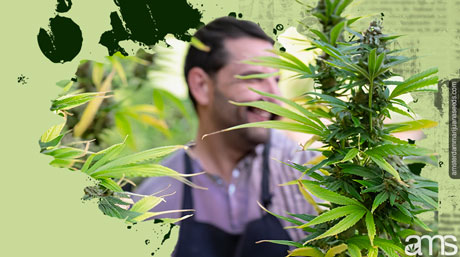
Conclusion
Congratulations, dear growers! You have now become well-versed in the best practices for watering and irrigation in outdoor cannabis gardens, including those for growing marijuana. By understanding the specific needs of cannabis plants, and adopting appropriate garden irrigation techniques, you are well on your way to a bountiful harvest of healthy, vibrant buds. Remember, cannabis cultivation, is a journey of continuous learning and improvement, so keep exploring, experimenting, and honing your skills as an expert cultivator.
Now, armed with this knowledge, go forth and create the cannabis garden of your dreams, including those for growing marijuana, and let the beauty and benefits of nature’s gift flourish under your care.
FREQUENTLY ASKED QUESTIONS
What are the best practices for watering cannabis plants?
The best practices for watering cannabis involve balancing between overwatering and underwatering, using room-temperature water, and watering at the base of the plant to avoid wetting the foliage. Adjust watering frequency based on climate, temperature, humidity, and soil composition.
How can I optimize irrigation for my outdoor cannabis garden?
Optimize irrigation by using drip irrigation or soaker hoses, which deliver water directly to the root zone. Consider employing a timer-based irrigation system for consistent watering and using mulch around plants to retain soil moisture and reduce weed growth.
What are the specific water needs of cannabis plants during different growth stages?
Cannabis seedlings need sparse watering with the soil allowed to dry slightly between sessions. Mature plants require more water due to their size and foliage. During the flowering phase, monitor soil moisture closely to ensure adequate water without waterlogging, adjusting the watering schedule based on plant stress indicators.
You may like
-


Save 30% all month long at The Dispensary Fulton
-


Ohioans activate to defend weed legalization from lawmakers
-


It All Turned A Bit Bogan At Aussie Medical Cannabis Symposium
-


Building cannabis brands that reach across markets
-


ILGM’s Home Grow Tour 2025
-


Karma Koala Podcast 238: Daniel Shortt Launches New Firm With Partner Perry Salzhauer In Pacific NW
Cannabis growing FAQ
Effective Techniques Preventing Controlling Fungus Mold
Published
6 months agoon
September 19, 2024By
admin
As a passionate cultivator of cannabis and an expert in the field, I’m eager to share my wealth of knowledge about one of the most critical aspects of cannabis growing – preventing and controlling fungus and mold. Whether you’re about to buy cannabis seeds for the first time or you’re an experienced grower, I guarantee this comprehensive guide will arm you with valuable insights to maintain your garden’s health and vitality.
So, let’s dive in and learn the tricks of the trade to keep those annoying fungal infections at bay.
Part 1: The Basics – Identifying Fungal Threats in Cannabis Growing
Before you can start preventing mold and fungus, it’s important to understand what you’re dealing with. When you buy cannabis seeds, you’re purchasing a promise of future growth. But like all living things, your cannabis plants are vulnerable to a range of fungal infections, including root fungus cannabis, black spot fungus, leaf fungus cannabis, and the dreaded powdery mildew fungus marijuana. Each of these pathogens can have detrimental effects on your marijuana seeds’ germination and overall plant health.
For instance, root fungus cannabis can lead to root rot, while black spot fungus creates small, dark spots on your cannabis leaves. Similarly, leaf fungus cannabis is characterized by browning and dying leaves, while powdery mildew fungus marijuana appears as a white, powdery substance on your plant’s leaves, stems, and buds.

Part 2: Preventing Fungus – An Ounce of Prevention Is Worth a Pound of Cure
Prevention is always the first line of defense. The key to preventing fungus in your cannabis growing process is maintaining optimal growing conditions and practicing good hygiene.
Firstly, always buy cannabis seeds from reliable sources to ensure they are disease-free. When sowing your marijuana seeds , it’s critical to use sterilized soil and pots. Remember to maintain a suitable pH level in the soil, between 6.0 and 7.0, as this can help prevent root fungus cannabis. Proper aeration and drainage are also vital in avoiding waterlogging, a condition that encourages fungal growth.
Regulating your growing environment’s temperature and humidity is another crucial factor in preventing mold. High humidity coupled with warm temperatures can provide the perfect environment for mold and fungus to thrive. Keep your humidity levels below 50% during the flowering stage to prevent issues like leaf fungus cannabis and black spot fungus.
Also, be mindful of overcrowding your plants as this can restrict airflow and create a damp environment conducive to fungal growth. Finally, the use of anti-fungal sprays can aid in fungus prevention, making your cannabis growing experience a fruitful one.

Part 3: How to Control Fungus in Soil and Your Cultivation Space
A crucial aspect of preventing fungus lies in the question, ‘How to control fungus in soil?’. This is where a good compost tea can come into play, by boosting beneficial bacteria in the soil that help keep fungal spores at bay.
Likewise, for controlling mold, regular inspections are vital. Examine your plants frequently for signs of mold at the early stages of growth. If you detect mold, prune the affected areas immediately to prevent further spread. Proper ventilation is also key in mold control cannabis. Fans, filters, and exhaust systems can help to keep air circulating and prevent moisture buildup.
Remember, fungus and mold thrive in damp, poorly lit areas. Therefore, ensure that your growing space is well-lit and adequately ventilated to maintain a healthy environment for your cannabis plants.
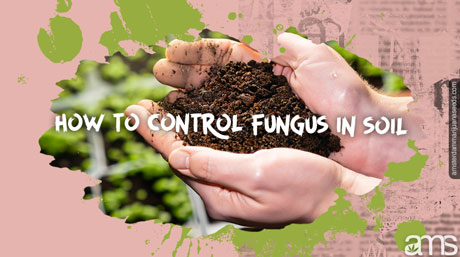
Part 4: Dealing with the Unavoidable – Treatments for Fungal Infections
Despite your best efforts, you might still encounter a fungal issue. Don’t fret! There are several methods for treating and controlling mold and fungus.
Fungicides can be helpful in combating these pests. Neem oil is a natural, safe choice that can effectively tackle powdery mildew fungus marijuana. Similarly, a baking soda and water mixture can be used as a homemade fungicide to treat black spot fungus and leaf fungus cannabis.
For a more serious infection like root fungus cannabis, you might need to resort to systemic fungicides or even consider repotting your plants in fresh, sterilized soil.
Regardless of the method you choose, remember to act quickly and decisively. Timely intervention is key in how to prevent a fungal infection from spreading and causing more damage.
To sum up, cannabis cultivation, whether from marijuana seeds or cuttings, is a rewarding endeavor that requires attention to detail, passion, and a fair share of knowledge on preventing fungus and mold. By keeping these pointers in mind, you can navigate the most common fungal threats, ensuring your cannabis growing endeavor remains as healthy and productive as possible.
Through learning how to control fungus in soil, practicing rigorous mold control cannabis, and always keeping an eye out for potential issues, you’re set on the path of successful cannabis cultivation. Now, whether you’re about to buy cannabis seeds or are already waist-deep in the throes of cannabis growing, you’re equipped to prevent, control, and treat any potential fungal hazards, making your journey in growing marijuana as smooth as possible.
FREQUENTLY ASKED QUESTIONS:
1. What are the common fungal threats in cannabis growing?
Common fungal threats include root fungus, black spot fungus, leaf fungus, and powdery mildew. Each can cause serious damage to your plants, so early identification and prevention are key.
2. How can I prevent mold and fungus in my cannabis garden?
Maintain optimal growing conditions by keeping humidity levels below 50%, ensuring good ventilation, and avoiding overcrowding. Use sterilized soil and pots, and always buy seeds from reliable sources.
3. What should I do if I detect fungus or mold on my cannabis plants?
Act quickly by pruning affected areas and applying natural fungicides like neem oil or a baking soda mixture. For severe root infections, consider using systemic fungicides or repotting in fresh, sterilized soil.
Cannabis growing FAQ
Environmental Factors Impact Cannabis Plants
Published
6 months agoon
September 19, 2024By
admin
In this article you will find answers to following questions: How does temperature affect cannabis plants?, What are the effects of light stress on marijuana cultivation?, Why is it essential to control humidity for cannabis plant health?, What are some environmental factors impacting marijuana plants?, How can you mitigate the impact of temperature on cannabis cultivation?, What methods can be used to manage humidity for better marijuana growth?, Why is understanding environmental factors crucial for cannabis cultivation?, How does light stress influence marijuana plant health?, What are some ways to regulate temperature during cannabis growth?, How do environmental factors affect the overall health of marijuana plants?
Understanding the Environmental Factors Affecting Cannabis Cultivation
As a passionate marijuana grower, you know that cultivating healthy and thriving cannabis plants requires more than just planting seeds and watering them. Environmental factors play a crucial role in the success of your marijuana cultivation endeavors. In this comprehensive guide, we will explore the various environmental challenges cannabis plants face, such as temperature, humidity, and light stress, and how you can effectively mitigate their effects.
1. Marijuana seeds – The Foundation of Your Growth
To embark on a successful cannabis cultivation journey, the first step is acquiring high-quality cannabis seeds. When you buy marijuana seeds, make sure to choose a reputable source that offers a wide variety of strains to suit your preferences and growing conditions. Whether you’re looking for auto-flowering, feminized, or regular cannabis seeds , do thorough research to ensure you are investing in premium genetics.
2. Cannabis Temperature – Striking the Right Balance
Temperature regulation is one of the most critical factors that can significantly impact cannabis plants. These green beauties thrive in a specific temperature range, ideally between 20°C to 30°C (68°F to 86°F) during the light period, and slightly cooler temperatures, around 18°C to 24°C (64°F to 75°F) during the dark period. Fluctuations outside this range can result in adverse effects on growth, flowering, and overall plant health.
During the colder months, consider using heaters to maintain the desired temperature range in your grow room. Conversely, for hot summer days, invest in ventilation systems or air conditioning to prevent the plants from becoming stressed due to excessive heat.
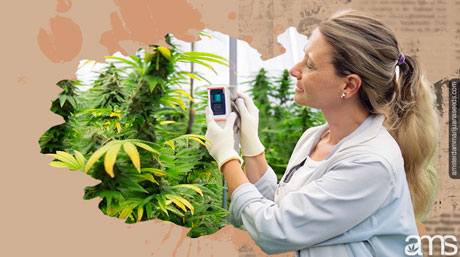
3. Humidity Control – The Key to Preventing Mold and Mildew
Humidity management is another vital aspect of marijuana cultivation. High humidity levels can lead to mold and mildew issues, which can be devastating for your plants. On the other hand, low humidity levels can cause stress, slow growth, and negatively impact the yield.
For the vegetative phase, maintain humidity levels between 40% to 70%. As the plants enter the flowering phase, gradually reduce humidity to around 40% to 50% to prevent mold development in the dense buds.
To maintain optimal humidity levels, use humidifiers or dehumidifiers as necessary. Additionally, proper airflow in the grow room will aid in regulating humidity levels and minimize the risk of mold and mildew.
4. Light Stress Effects – Striving for the Perfect Balance
Light stress can have both positive and negative effects on cannabis plants, depending on how it is managed. Adequate light is essential for robust growth and high-quality yields. However, too much light, especially during the flowering phase, can lead to light stress and hermaphroditism.
During the vegetative phase, marijuana plants thrive under 18 to 24 hours of light per day. Once they enter the flowering phase, reduce the light exposure to 12 hours per day to trigger bud development. Ensure a consistent light schedule, as any interruptions can cause stress and negatively affect your plants.
If you are growing outdoors, be mindful of natural light sources, such as streetlights or security lights, which can disturb the dark period for your plants. Consider using blackout curtains or light-blocking materials to maintain a strict light schedule.

Mitigating Environmental Stress for Healthy Cannabis Plants
Creating an optimal growing environment is fundamental to mitigating environmental stress and fostering healthy marijuana plants. Investing in a well-insulated and properly sealed grow room allows you to have better control over temperature, humidity, and light exposure.
Additionally, consider using reflective materials such as Mylar or white paint on the walls of your grow room to ensure maximum light penetration and distribution. A reflective surface can enhance the efficiency of your grow lights, allowing your plants to receive more usable light.
Temperature and Humidity Monitoring
Maintaining the optimal temperature and humidity levels can be achieved through diligent monitoring. Use thermometers and hygrometers to regularly check the conditions in your grow room. Many modern monitoring systems even allow remote access, enabling you to keep an eye on your plants from anywhere.
With this data at hand, you can quickly identify any deviations and make necessary adjustments to keep your cannabis plants in the comfort zone.
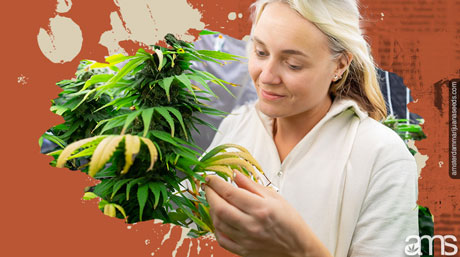
Proper Ventilation and Airflow
Adequate ventilation and airflow are vital for a healthy marijuana garden. A well-ventilated grow room not only helps regulate temperature and humidity but also provides plants with fresh CO2, which is essential for photosynthesis.
Install exhaust fans to expel hot and stale air, and intake fans to bring in fresh air. Place fans strategically to ensure even distribution of air throughout the grow room. Creating a gentle breeze helps strengthen the plants’ stems and prevents stagnant air that could promote mold growth.
Light Stress Management
To minimize light stress, choose the right type of grow lights for your marijuana plants. LEDs, HPS, and CMH lights are popular choices for indoor growers. Each light type has its advantages and disadvantages, so do your research and select the best option based on your specific needs and budget.
During the flowering phase, remember to keep your grow room as dark as possible during the 12-hour dark period. Light leaks can cause stress and interrupt the plants’ natural light cycle, potentially leading to reduced yields and compromised quality.
Nurturing Your Cannabis Plants for Optimal Growth
Proper watering is crucial for healthy marijuana plants. Overwatering can lead to root rot and other moisture-related issues, while underwatering can cause the plants to wilt and suffer nutrient deficiencies.
Water your plants when the top inch of the soil feels dry to the touch. Use your fingers to gauge the moisture level and adjust your watering schedule accordingly. Cannabis plants generally prefer a slightly acidic pH level, around 6.0 to 6.5, in the soil or growing medium.

Nutrient Management
Marijuana plants require a balanced nutrient regimen to thrive. Provide the necessary macro and micronutrients through well-formulated fertilizers. Nutrient deficiencies or excesses can lead to various issues, including stunted growth and nutrient lockout.
Pay attention to the specific nutrient needs of your plants during different growth stages. For example, during the vegetative phase, they require higher levels of nitrogen to support leafy growth, while the flowering phase requires a shift to higher phosphorus and potassium levels to support bud development.
Training and Pruning
Pruning and training techniques can help improve light distribution within the canopy, leading to better overall growth and bud development. Topping, FIMing, and LST (Low-Stress Training) are common methods used by growers to encourage bushier plants and maximize light exposure to lower bud sites.
Pests and Disease Prevention
Keep a close eye on your marijuana plants for any signs of pests or diseases. Early detection is essential to prevent infestations from spreading and causing significant damage to your crops. Use organic pest control methods whenever possible to minimize the use of harmful chemicals.
Additionally, maintain a clean and sanitized grow room to reduce the risk of pests and diseases taking hold. Regularly inspect your plants and surrounding areas, and promptly address any issues you may encounter.
The Satisfying Rewards of Expert Cannabis Cultivation
Congratulations, you’ve now equipped yourself with the knowledge to successfully navigate the challenges posed by environmental factors when growing marijuana. By maintaining optimal temperature and humidity, managing light stress, and providing the right care, you can ensure healthy and thriving cannabis plants that will reward you with bountiful harvests. Happy growing!
FAQ
1. How does temperature affect cannabis plants? Temperature plays a crucial role in the growth and health of cannabis plants. Ideal temperatures range between 20°C to 30°C (68°F to 86°F) during light periods and slightly cooler, 18°C to 24°C (64°F to 75°F), during dark periods. Deviations can harm plant growth, affect flowering, and lead to stress. Maintaining proper temperature is key to healthy cultivation.
2. Why is humidity control important in cannabis cultivation? Managing humidity is essential to prevent issues like mold, mildew, and slow growth. Cannabis plants need different humidity levels in their vegetative and flowering stages, with ideal ranges of 40-70% in vegetative and 40-50% during flowering. Proper control promotes better yields and overall plant health.
3. What are the effects of light stress on cannabis plants? Light stress can either enhance or harm cannabis plants, depending on how it is managed. Excess light exposure can lead to stress, especially in the flowering phase, while insufficient light hinders growth. Regulating light exposure is critical to ensuring healthy development and avoiding problems like hermaphroditism.
Cannabis growing FAQ
Essential Elements Create A Optimal Environment
Published
6 months agoon
September 19, 2024By
admin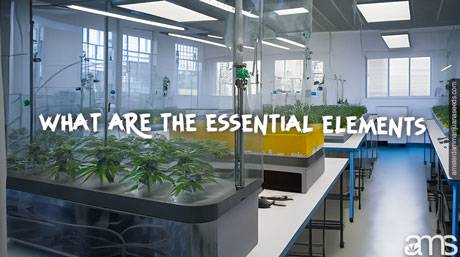
In this article you will find answers to following questions: what are the germination essential elements?, what constitutes a suitable germination environment?, what are the key seed germination factors?, what are the optimal germination conditions?, what is the ideal germination temperature range?, what are the marijuana seeds moisture requirements for germination?, what are the specific light needs during germination?, how does soil composition affect germination?, what are some cannabis seed germination tips?, what are some successful germination strategies?
Hello fellow enthusiasts, welcome back to our deep dive into the art of cannabis cultivation. If you’re here, you’re likely pondering about the mysterious journey from a single seed to a thriving plant, specifically the pivotal phase of germination. After all, as our humble cannabis growing experience has taught us, germination sets the foundation for a healthy and successful harvest. Today, we’re focusing on the core aspects that make up the optimal germination conditions, and how to maneuver through the unique challenges of this critical phase.
Perhaps you’ve decided to buy cannabis seeds for the first time, or you’re an experienced cultivator seeking to maximize your yield. Regardless, understanding the germination essential elements is the first stepping stone in your cannabis growing endeavor. Whether you’re working with marijuana seeds, the underlying principles of germination remain the same.

Acquiring Quality Seeds
Before you even contemplate creating the suitable germination environment, it is essential to source high-quality cannabis seeds. The importance of using top-notch seeds cannot be understated; it’s the foundation of your cannabis growing adventure.
Be selective when you buy cannabis seeds. Look for mature seeds with a hard outer shell, typically dark brown with lighter accents. Immature seeds are generally green or white, and while they may still germinate, they will likely struggle in the early stages of growth, leading to a subpar yield.
The Perfect Temperature
In establishing the optimal germination conditions, understanding the right germination temperature range is pivotal. Your cannabis seeds, just like all seeds, are biologically programmed to sprout under particular environmental conditions. In nature, this typically occurs in spring when the soil warms up.
Maintaining a germination temperature range of 70-85°F (20-30°C) is ideal. This range mimics the warmth of spring and triggers the seeds to germinate. Keep a close eye on your temperature, ensuring it stays within this range. Too cold, and the seeds will remain dormant; too hot, and the seeds might get damaged.

The Right Amount of Moisture
Another essential aspect of creating a suitable germination environment is managing seed moisture requirements. Seeds require a moist environment to sprout, as the water softens the hard outer shell and triggers the growth of the radicle (the embryonic root).
Ensure your medium remains moist but not waterlogged, as this could lead to fungal issues and waterlogging. Mist your cannabis seeds with a spray bottle if you find the medium drying out too quickly. Remember, the goal is to mimic nature’s moist spring soil, not a swamp.
Light Levels
While the role of light in the germination process may seem secondary, understanding germination light needs is a crucial aspect of successful germination strategies. Most seeds, including cannabis seeds , need a certain light spectrum to trigger growth after the germination process has started.
After sprouting, your cannabis seedlings require plenty of light to grow strong and healthy. Keep them under a suitable light source, such as full spectrum LED lights, ensuring they get 16-18 hours of light per day.
Soil Composition
Your choice of growth medium can drastically impact your germination success. Let’s explore the role of soil composition in germination.
Soil provides a nurturing environment for your cannabis seeds, packed with the nutrients they need to sprout. A light, well-aerated soil with good drainage is ideal for cannabis growing. This sort of composition facilitates optimal root development and ensures your seedlings don’t become waterlogged.
Consider using a soil mix specifically formulated for seed germination. This type of mix generally contains peat moss or coconut coir, perlite or vermiculite, and sometimes a bit of slow-release granular fertilizer.

Seed Germination Tips
Armed with the knowledge of these seed germination factors, you’re well on your way to mastering the art of cannabis growing. But let’s dive a bit deeper with some more specific seed germination tips.
Firstly, always handle your seeds gently to avoid causing any damage. Use a pair of tweezers if necessary. Secondly, consider soaking your cannabis seeds in a glass of distilled water for 12-24 hours before planting them. This can help soften the outer shell and kickstart germination.
Refining your Approach
Creating the ideal conditions for your cannabis seeds to germinate is part art, part science. As you continue to refine your successful germination strategies, remember that each seed is unique and might require slightly different conditions to sprout. Be patient, observe carefully, and adjust your approach as necessary.
In conclusion, the magic of turning cannabis seeds into a thriving plant lies in a deep understanding of the germination essential elements and the ability to provide them consistently. This intricate dance with nature can indeed be challenging, but the rewards are beyond satisfying.
Remember, even the most seasoned cannabis cultivators are always learning and experimenting. So whether you’re about to buy cannabis seeds for the first time or you’re an experienced hand at cannabis growing, keep pushing the boundaries of your knowledge, and happy growing!
FAQ
1. What are the key factors for successful cannabis seed germination?
Successful cannabis seed germination requires the right temperature, moisture, light, and soil composition. Ensuring a stable environment with temperatures between 70-85°F (20-30°C), proper moisture, and light exposure is essential for healthy sprouting.
2. What is the ideal temperature range for germinating cannabis seeds?
The optimal temperature range for cannabis seed germination is 70-85°F (20-30°C). This warmth mimics natural spring conditions, promoting seed sprouting and healthy growth.
3. How does soil composition affect cannabis seed germination?
A well-aerated, nutrient-rich, and well-draining soil mix is crucial for cannabis seed germination. Using a mix that includes materials like peat moss, perlite, or coconut coir helps provide a supportive environment for root development and prevents waterlogging.

Save 30% all month long at The Dispensary Fulton

Ohioans activate to defend weed legalization from lawmakers

It All Turned A Bit Bogan At Aussie Medical Cannabis Symposium

Building cannabis brands that reach across markets

ILGM’s Home Grow Tour 2025

Karma Koala Podcast 238: Daniel Shortt Launches New Firm With Partner Perry Salzhauer In Pacific NW
Trump invites former cannabis prisoner to speech, but doesn’t mention cannabis (Newsletter: February 5, 2025)

How Cannabis Can Help You During Lent

Buddha Chief raises vibrations at new Housing Works dispensary in NoMad

3 best THCA vape carts of 2025 by Leafly

Distressed Cannabis Business Takeaways – Canna Law Blog™

United States: Alex Malyshev And Melinda Fellner Discuss The Intersection Of Tax And Cannabis In New Video Series – Part VI: Licensing (Video)

What you Need to Know

Drug Testing for Marijuana – The Joint Blog

NCIA Write About Their Equity Scholarship Program

It has been a wild news week – here’s how CBD and weed can help you relax

Cannabis, alcohol firm SNDL loses CA$372.4 million in 2022

A new April 20 cannabis contest includes a $40,000 purse

Your Go-To Source for Cannabis Logos and Designs

UArizona launches online cannabis compliance online course
Trending
-

 Cannabis News2 years ago
Cannabis News2 years agoDistressed Cannabis Business Takeaways – Canna Law Blog™
-

 One-Hit Wonders2 years ago
One-Hit Wonders2 years agoUnited States: Alex Malyshev And Melinda Fellner Discuss The Intersection Of Tax And Cannabis In New Video Series – Part VI: Licensing (Video)
-

 Cannabis 1012 years ago
Cannabis 1012 years agoWhat you Need to Know
-

 drug testing1 year ago
drug testing1 year agoDrug Testing for Marijuana – The Joint Blog
-

 Education2 years ago
Education2 years agoNCIA Write About Their Equity Scholarship Program
-

 Cannabis2 years ago
Cannabis2 years agoIt has been a wild news week – here’s how CBD and weed can help you relax
-

 Marijuana Business Daily2 years ago
Marijuana Business Daily2 years agoCannabis, alcohol firm SNDL loses CA$372.4 million in 2022
-

 California2 years ago
California2 years agoA new April 20 cannabis contest includes a $40,000 purse



